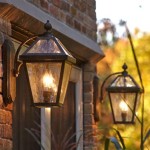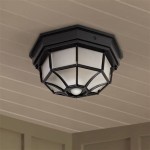Outdoor Lighting: Crucial Aspects for Commercial Buildings
In the competitive landscape of today's commercial real estate market, every aspect of a building's design and functionality is meticulously considered to attract tenants and enhance overall appeal. Outdoor lighting plays a pivotal role in achieving these objectives, as it serves multiple purposes that contribute significantly to the building's aesthetic, safety, and functionality.
1. Enhancing Curb Appeal and Building Aesthetics
Well-illuminated commercial buildings create a visually appealing and inviting atmosphere. Strategic lighting can accentuate architectural features, enhance landscaping, and draw attention to key entrances, making the building stand out from the surrounding environment. By creating a welcoming and aesthetically pleasing exterior, outdoor lighting can make a lasting impression on potential tenants and visitors.
2. Promoting a Sense of Security
Adequate lighting around a commercial building is essential for deterring crime and promoting a sense of safety. By illuminating dark areas, such as parking lots, walkways, and entrances, outdoor lighting reduces the likelihood of criminal activity and creates a more secure environment for employees, tenants, and visitors. Brightly lit areas also make it easier for security personnel to monitor the property and respond promptly to any suspicious behavior.
3. Providing Enhanced Functionality and Accessibility
Outdoor lighting is crucial for ensuring the safe and convenient use of a commercial building's exterior spaces. Well-lit parking lots and walkways allow for easy navigation, reducing the risk of accidents or injuries. Additionally, outdoor lighting can illuminate signage, making it easier for visitors to locate the building, especially during evening hours or in low-visibility conditions.
4. Energy Efficiency and Cost Savings
With advancements in lighting technology, energy-efficient outdoor lighting options are readily available. LED fixtures, for example, consume significantly less energy than traditional lighting sources, resulting in reduced operating costs. Motion sensors and timers can be incorporated to further optimize energy consumption, ensuring that lighting is only active when necessary.
5. Compliance with Building Codes and Regulations
It is important to adhere to building codes and regulations regarding outdoor lighting. These codes may stipulate specific illumination levels for parking lots, walkways, and building entrances. Complying with these regulations not only ensures the safety and accessibility of the building but also avoids potential penalties or fines for non-compliance.
In conclusion, outdoor lighting is an integral aspect of commercial building design and functionality. By enhancing curb appeal, promoting security, providing improved functionality, and optimizing energy efficiency, well-designed outdoor lighting can significantly impact the building's overall success. Investing in high-quality outdoor lighting solutions is a wise investment that pays dividends in terms of tenant satisfaction, property value, and building safety.

Commercial Led Outdoor Lighting Made For Architects Alcon

Led Building Exterior Lighting Types And S

Commercial Building Outdoor Lighting Google Search

Commercial Led Outdoor Lighting Meteor Space Electical

How To Enhance Business Security With Outdoor Lighting Vector

With Gorgeous Commercial Buildings Like This Outdoor Lighting Is A Must Facade Exterior

10 Tips For Better Outdoor Lighting On Commercial Buildings Solutions

Idea For Façade With Outdoor Lighting Ligman

The Outdoor Lights Atlanta S Premier Lighting Specialist Residential And Commercial

The Operational Benefits Of Exterior Outdoor Led Lights
Related Posts







